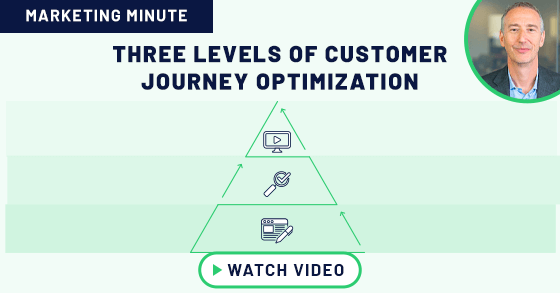Account-based Marketing (ABM) is a highly targeted marketing strategy that focuses a company’s marketing efforts on a selected target audience group who are already on your target list or have shown “intent” to purchase your product. Intent data is precious in the hands of your sales team because it not only shows who to reach out to and when to reach out.
Watch Overdrive CEO Harry J. Gold explain intent-based targeting and how it fits into an ABM campaign.
Video Transcript
“An important component to ABM is intent. You have your defined audience of people you want to go after, and then you have the people within that audience who have shown intent signals that they’re interested in what you sell. And for those people, you can bid more, you can apply more targeting to those people.
Let me explain how intent-based targeting works. For example, Madison Logic, like everybody else, has an ABM offering. Most of them are using Bombora or LiveRamp or some big cookie pool or data pool. And they’re tracking billions of interactions across hundreds of millions of B2B professionals. And they have all these data partners. These data partners are websites that allow these ABM services to track what people are looking at. What case studies they’re looking at, what webinars they’re watching, what videos they’re watching, what articles they’re reading, what white papers they’re downloading, all of that stuff. And what that does is create category-specific intent signals.
For example, these are the intent categories of Madison Logic, which, by the way, come right out of Bombara. So, what they’re saying is, look, here are all these people who are researching these topics right now, and you can reach them, so you can overlay, look, these are the companies I want to reach, and these are the products that I want them researching when I get in touch with them.
You have your general pool of ABM targets, and then you have a layer at the top of that of the ones who have shown intent signals. Here’s how it works. Alan Duan, CTO at Nestle–this guy is reading articles on retail tech, global website performance, enterprise apps, and things like that. And usually, he reads about two to three articles or assets related to global website performance, but suddenly he spikes to ten. The guy is reading ten articles per month about global website performance, and so are other people at this company. So that tells you that Nestle is surging under the category of global website performance. All of these people get put into a pool, and now we can target those people with white papers, ads, videos, and things like that. Basically, that’s the gist behind ABM intent targeting, that they’re watching what all these people are doing across all of these business and technology sites, and they’re putting them in these intent pools that we can incorporate into our targeting.
And then, as I said, when you measure, it’s not just about new leads, but it’s looking at the growth of engagement you’re getting from your current database. Often what we’re able to say is, look, from our targeted list of companies that we’re going after, we were able to do reverse IP look up, and you had 20,000 page views from those companies. Last month, we started our ABM program. And this month, we had 100,000 page views from those companies you’re trying to do business with. And those people were engaging, and you had a 300% increase in lead score from those people in your target companies. So, this is a big part of ABM metrics. It’s not just about new leads. It’s about getting people with a low lead score to have a high lead score so that sales will pay attention to them.”
Want to focus your marketing efforts and media investments on generating leads and opportunities your sales team will love? Click to learn more about Overdrive’s ABM methodology here: https://www.ovrdrv.com/knowledge/always-on-account-based-marketing/. While speaking with us, ask us about our custom SEO services designed to maximize online revenue.




